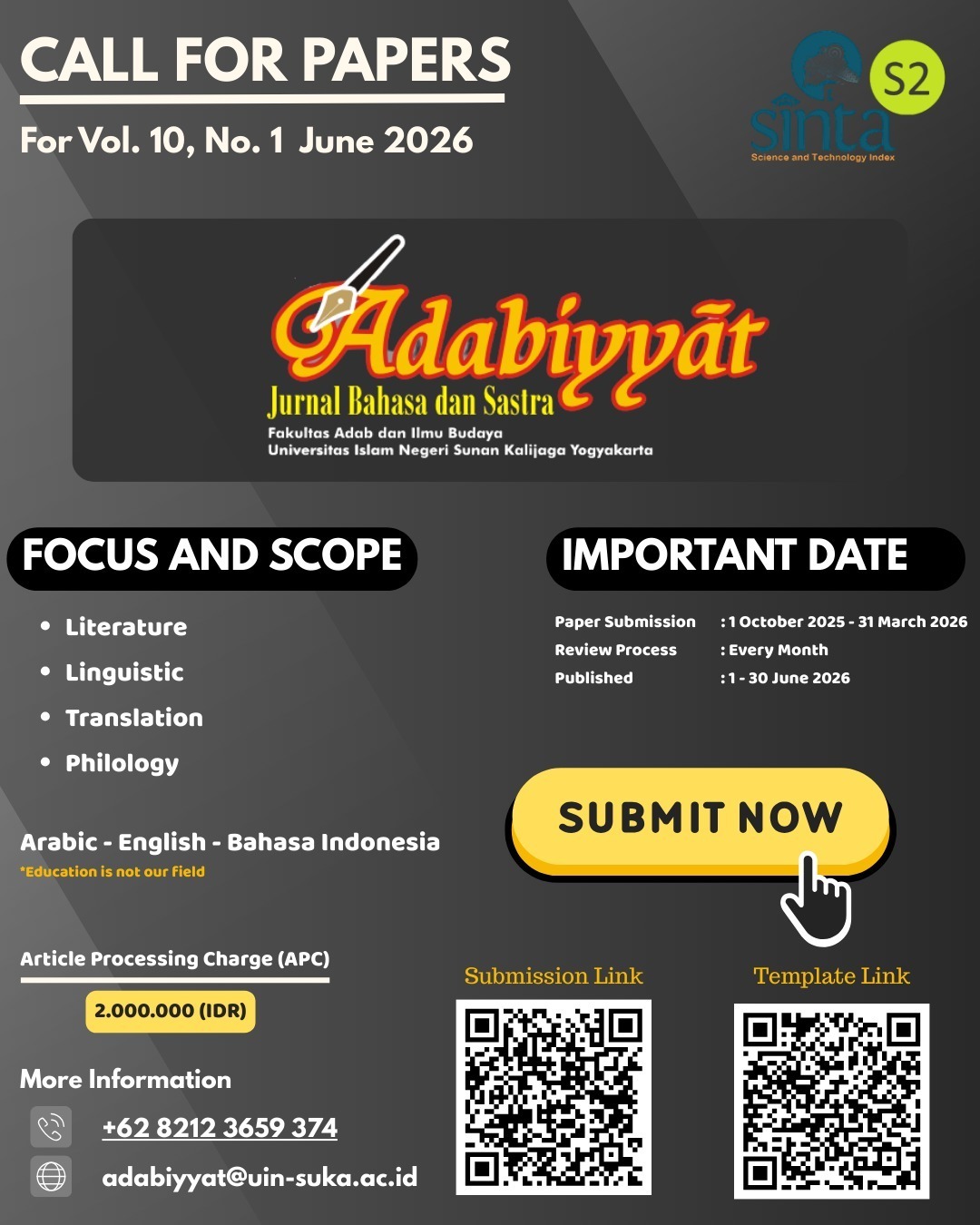KARAKTERISTIK BAHASA INDONESIA ORANG MINANGKABAU
DOI:
https://doi.org/10.14421/ajbs.2013.12104Abstract
The Indonesian is multi spoken languages society. Besides speaking with the official language (bahasa Indonesia), they also speaking in their own mother language. The use of local languages or the mother tongue is preferably as second language. Therefore, the acquisition of Indonesian, especially for Minangkabau society is strongly influenced by the structure of the first language. This is called as dialect or style. Slang or style can be seen from the lingual units that used by the speakers of the language. Lingual unit is a unit of language that carries meaning, both lexical and grammatical meaning. Unit lingual include morphemes, words, phrases, clauses, sentences, and discourse. In addition, there is another element which is the smallest unit in the language, segmental elements (phonemes) and supra-segmental elements (intonation). The results of the data analysis showed that there are some unit lingual speech marking Indonesian Minang people, namely: elements of segmental and supra-segmental elements, phatic, and sentence structure. In term of segmental elements, I have found six phonemes in Minangkabau language that affects Indonesian, phonemes are: /e/, /p/, /s/, /k/, and /j/. Moreover, in supra-segmental elements it appears that there tends to tone up the filler constituent predicate function. In declarative sentences, tone up there on the last syllable. In interrogative sentences, tone up tens to present in interrogative qualifiers. In imperative sentences, the intonation rising filler constituents tend be found in the predicate function, especially on the final syllable.
Downloads
References
Alwi, Hasan, dkk. 2000. Tata Bahasa Baku Bahasa Indonesia. Edisi Ketiga. Departemen Pendidikan dan Kebudayaan. Jakarta: Balai Pustaka.
Ayub. Asni. Dkk. 1988/1989. Tata Bahasa Minangkabau. Pusat Pembinaan dan Pengembangan Bahasa: Proyek Penelitian Bahasa dan Sastra Indonesia dan Daerah Sumatra Barat.
Gunawan, Arsim. 1999. “Kedudukan Bahasa Daerah dan Tantangan pada IX, Abad yang Datang”. Makalah pada Kongres Linguistik Nasional, Jakarta.
Halim, Amran. 1984. Intonasi dan Hubungannya dengan Sintaksis Bahasa Indonesia. Jakarta: Djambatan.
Halim, Amran. 1976. Politik Bahasa Nasional. Jakarta: Pusat Pembinaan dan Pengembangan Bahasa.
Kaswanti Purwo, Bambang. 2003. “Penelitian Bahasa Nusantara di Indonesia”. Dalam Kumpulan Makalah Pertemuan Bahasa Ibu (MUBI). Jakarta
Kridalaksana, Harimurti. 1993. Kamus Linguistik. Edisi Ketiga. Jakarta: Gramedia.
Kridalaksana, Harimurti. 1986. Kelas Kata Dalam Bahasa Indonesia. Jakarta: Gramedia.
Marsono. 1993. Fonetik. Yogyakarta: Gadjah Mada University Press.
Moussay, Gerard. 1981. La Langage Minangkabau. Paris: Chacier De Acchipel 14.
Muhadjir, dkk. 1992. Transformasi Budaya Seperti Tercermin dalam Perkembangan Bahasa-bahasa di Indonesia. Jakarta: Fakultas Sastra Universitas Indonesia.
Ramlan, M. 1996. Sintaksis. Cetakan Ketujuh. Yogyakarta: CV. Karyono.
Sudaryanto. 1993. Metode dan Aneka Teknik Analisis Bahasa. Seri ILDEP. Yogyakarta: Duta Wacana University Press.
Suwito. 1983. Sosiolinguistik: Teori dan Problema. Surakarta: Henary Offset.
Tarigan, Guntur. 1983. Pengajaran Sintaksis. Bandung: Angkasa.
Downloads
Published
Issue
Section
License
- Adabiyyāt: Jurnal Bahasa dan Sastra publishes all articles entirely in full text.
- It is permissible for readers to download and to use it for scientific purposes and scientific dissemination.
- The author can re-publish the article that has been published by the Adabiyyāt: Jurnal Bahasa dan Sastra after obtaining written permission from the editor. This letter can be obtained by submitting a request letter for permission to republish the article to Adabiyyāt: Jurnal Bahasa dan Sastra via email adabiyyat@uin-suka.ac.id. In the second publication, the author is required to include information that the article was firstly published by the Adabiyyāt: Jurnal Bahasa dan Sastra.









